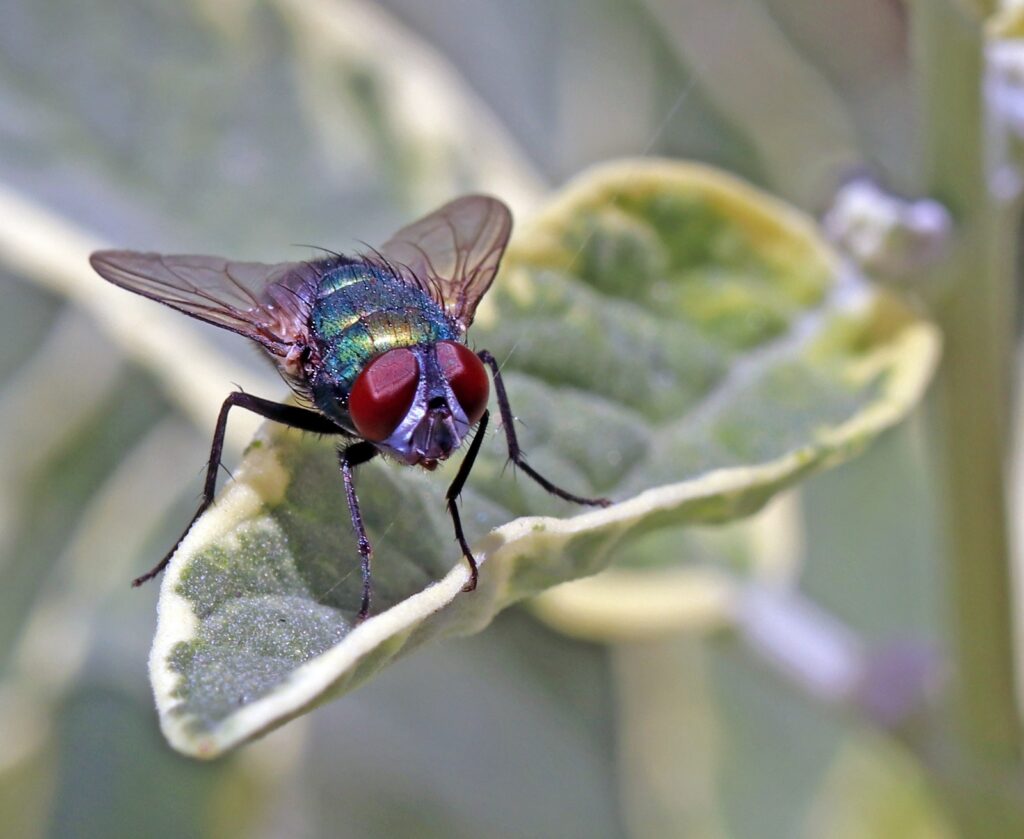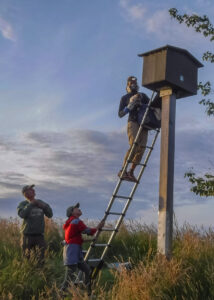
Across British Columbia, businesses, organizations, and community groups are teaming up to protect wildlife and natural spaces. BC Nature is proud to feature these inspiring collaborations here on bcnature.org — from joint habitat restoration projects to shared educational programs — showing that when we work together, we can create lasting change. Explore how collaboration is driving conservation forward and find ideas to spark your own projects for a healthier, more resilient B.C.
A Quiet Gesture of Hope: How Nest Boxes Became a Symbol of Stewardship in Saanich, BC

Fall BCnature Magazine – Author: J. Dowd
Sometimes, conservation doesn’t come with a spotlight. It arrives quietly—on the heels of a necessary infrastructure upgrade, in the form of a handful of nest boxes hung with care.
That’s exactly what happened in Saanich, British Columbia, when BC Hydro needed to upgrade an overhead circuit to maintain service for its customers. Faced with limited options, the team chose the route with the least environmental impact, even though it meant clearing some vegetation and removing several trees—two of which may have served as future nesting sites.
What struck me about this project wasn’t the unavoidable loss of trees, but the conscious decision that followed, a decision that wasn’t required but came from a place of responsibility and respect: to install five nest boxes as a way of giving something back to the landscape.
This wasn’t just mitigation—it was a gesture of care.
The decision to install nest boxes didn’t begin with a plan—it grew from a dialogue. During community engagement sessions, a long-time local observer shared a summary of 20 years of informal monitoring, which revealed that two historical Western Screech-Owl territories—thought to have been unoccupied since the mid-1980s—had recently been re-occupied. This unexpected information, not found in formal species-at-risk databases, prompted the team to dig deeper. They consulted with the provincial specialist and then decided to deploy passive monitoring tools—automated recording units (ARUs)—to confirm the presence of screech-owls. The faint, haunting calls were there, validating the community reports and confirming a small but meaningful return.
When it later became clear during the construction phase that two unavoidable trees with potential nesting value would need to be removed, the team took notice. Perhaps these owls—already struggling with habitat pressure and predation—were nest-site limited. In response, three nest boxes were installed nearby in Saanich parkland, where suitable habitat remained. Two additional boxes were designed with other cavity-nesters and waterbirds in mind, taking a broader community approach to restoring what was lost.
No press release. No fanfare. Just a quiet, mindful act of stewardship.
As a conservation storyteller, what moved me most was this: the installation of these nest boxes wasn’t about checking a box. It wasn’t a public relations campaign or a project requirement. It was simply about doing the right thing—even if no one was watching.
The team reached out to the Habitat Acquisition Trust to ensure their actions didn’t conflict with other local efforts. While formal monitoring of the boxes isn’t part of the plan, the hope is that these small sanctuaries may one day become home to owlets finding their voice in the trees once more.
These boxes may seem like a small gesture, but they represent something bigger. They show us that even in the context of utility work—where deadlines, wires, and poles usually take center stage—there’s room for compassion. There’s room for listening to the forest. Because sometimes, a nest box is more than a box, it’s a symbol of hope, a promise to do better, and a reminder that if we each take small steps to restore what we take, the ripple effects can be profound—for wildlife, and for us. ☼
